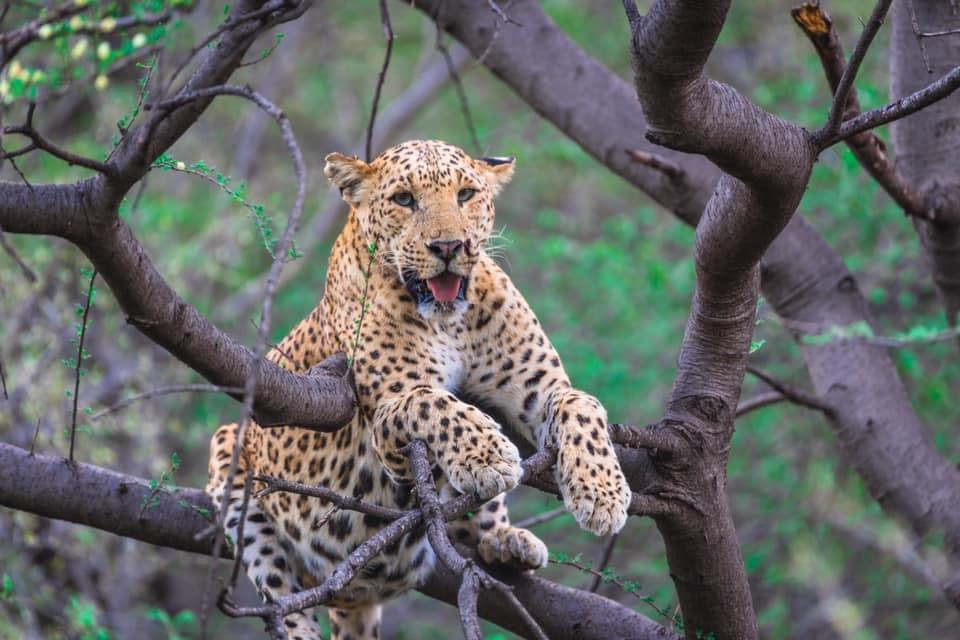- November 27, 2024
How Jhalana Forest Combines Conservation with Cultural Tourism
Jhalana Forest Reserve, with its unique blend of rich biodiversity and ancient temples, offers visitors a rare opportunity to experience the intersection of conservation and cultural heritage. While the reserve is renowned for its thriving leopard population and diverse wildlife, it also boasts historical and spiritual landmarks that add depth to its eco-tourism appeal. By integrating conservation efforts with cultural tourism, Jhalana provides a holistic and enriching experience for visitors.
- The Cultural Significance of Jhalana
- Ancient Temples:
- Kali Mata Temple:
- A spiritual hub surrounded by forested landscapes, attracting devotees during Navratri.
- Shiv Mandir:
- Dedicated to Lord Shiva, this serene temple is popular during Mahashivratri for meditation and prayer.
- Durga Mata Temple:
- A sacred site that blends spiritual traditions with the forest’s natural beauty.
- Kali Mata Temple:
- Local Folklore and Legends:
- The temples and forest are steeped in local folklore, with stories of divine blessings, leopard sightings, and harmonious coexistence enriching the cultural narrative.

- How Jhalana Merges Conservation with Cultural Tourism
- Protecting Sacred Forests:
- Areas around the temples are considered sacred, ensuring minimal human interference and natural preservation of wildlife habitats.
- Educational Experiences:
- Guided tours educate visitors about the ecological and cultural significance of the temples and their surroundings.
- Community-Led Tourism:
- Local residents act as guides, sharing stories about the temples’ history and their relationship with the forest’s biodiversity.
- Spiritual Connection with Nature:
- The temples’ tranquil settings provide opportunities for meditation and reflection, fostering a deeper appreciation for the environment.
- Wildlife and Temples: A Unique Coexistence
- Wildlife Around Temples:
- Temples surrounded by dense vegetation are frequented by wildlife, including peacocks, langurs, and occasionally leopards, offering a unique blend of spiritual and wildlife experiences.
- Water Sources:
- Many temples have water tanks or ponds that attract animals, creating hotspots for wildlife sightings.
- Natural Habitats:
- The untouched areas around temples provide shelter and food for various species, supporting the forest’s biodiversity.
- Benefits of Combining Conservation and Cultural Tourism
- Enhanced Visitor Experience:
- Visitors can enjoy wildlife safaris alongside cultural exploration, making their trips more engaging and memorable.
- Revenue for Conservation:
- Increased tourist footfall generates funds for habitat restoration, wildlife monitoring, and community development.
- Cultural Preservation:
- Promoting temple visits as part of the eco-tourism experience helps preserve local traditions and spiritual practices.
- Education and Awareness:
- Visitors leave with a better understanding of how cultural heritage and natural ecosystems are interconnected.

- Challenges in Integrating Conservation and Cultural Tourism
- Balancing Tourism and Preservation:
- Managing the influx of devotees and tourists during festivals to avoid disturbing wildlife.
- Environmental Impact:
- Ensuring that temple visits do not lead to littering or damage to surrounding habitats.
- Respecting Wildlife:
- Educating visitors to prioritize wildlife safety during temple visits, especially in areas frequented by leopards.
- How Visitors Can Support Conservation and Cultural Tourism
- Follow Eco-Tourism Guidelines:
- Avoid littering, maintain silence, and respect wildlife during temple visits.
- Support Local Communities:
- Engage with local guides and purchase handcrafted souvenirs to contribute to the community’s economy.
- Participate in Conservation Efforts:
- Join tree plantation drives or donate to initiatives that protect Jhalana’s biodiversity and cultural heritage.
- Learn and Share:
- Educate yourself about the temples and wildlife of Jhalana and share your experiences to inspire others to visit responsibly.

- Future Opportunities
- Thematic Tours:
- Combine wildlife safaris with cultural trails, highlighting the unique blend of conservation and heritage at Jhalana.
- Cultural Events:
- Host eco-friendly festivals and cultural programs that celebrate both the temples and the forest’s biodiversity.
- Collaborative Conservation:
- Involve religious and conservation organizations in joint efforts to protect the forest and its sacred sites.
Conclusion
Jhalana Forest Reserve exemplifies the harmonious coexistence of conservation and cultural tourism. By blending its natural beauty with spiritual landmarks, the reserve offers a multi-faceted experience that attracts eco-conscious travelers and cultural enthusiasts alike. Protecting Jhalana’s wildlife and preserving its cultural heritage go hand in hand, ensuring that this urban sanctuary remains a symbol of balance and sustainability for generations to come.
Disclaimer All images used in this blog are either sourced from public domain or credited to their respective owners. If you are the copyright holder of any image and wish to request its removal or proper attribution, please contact us at [email protected]













